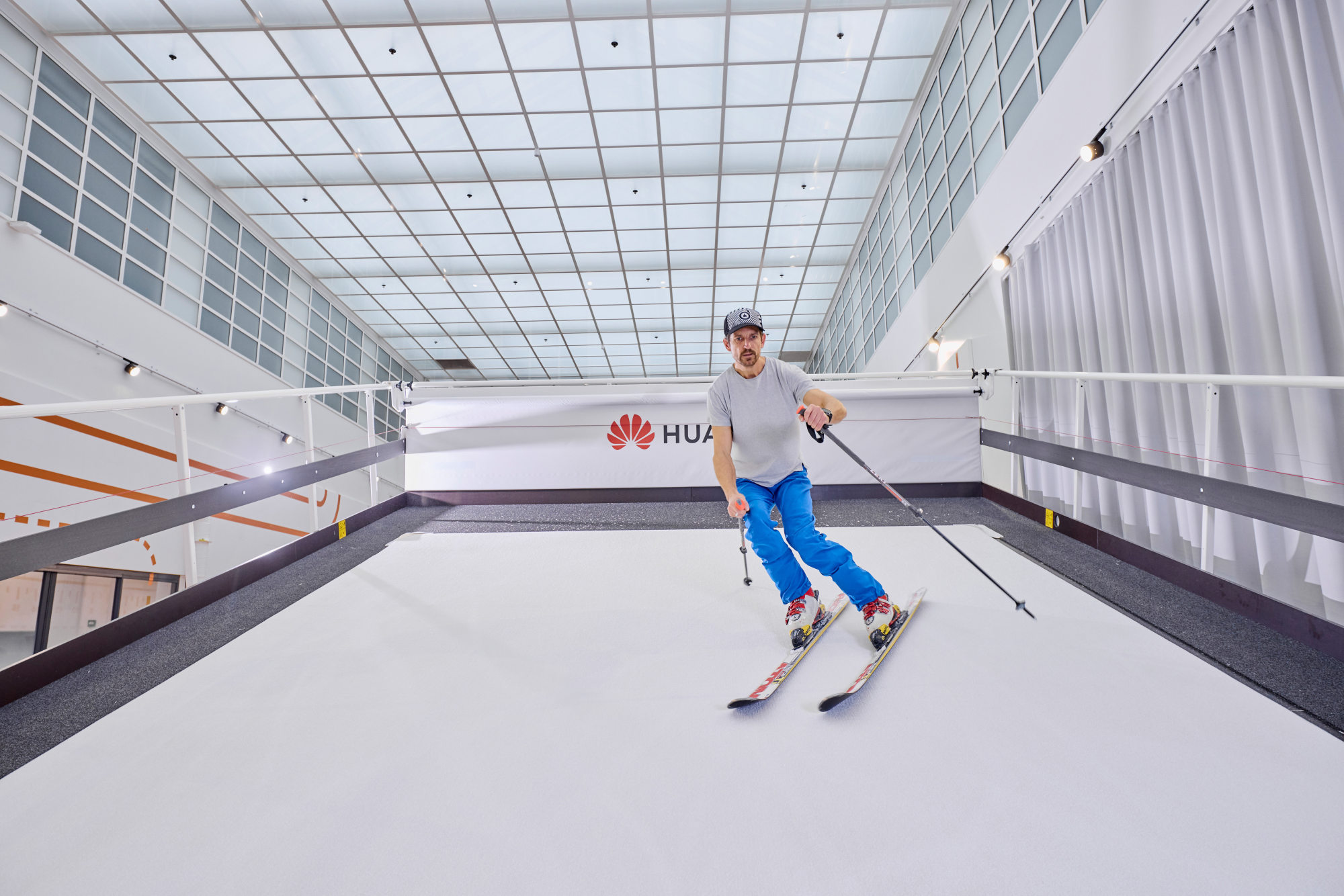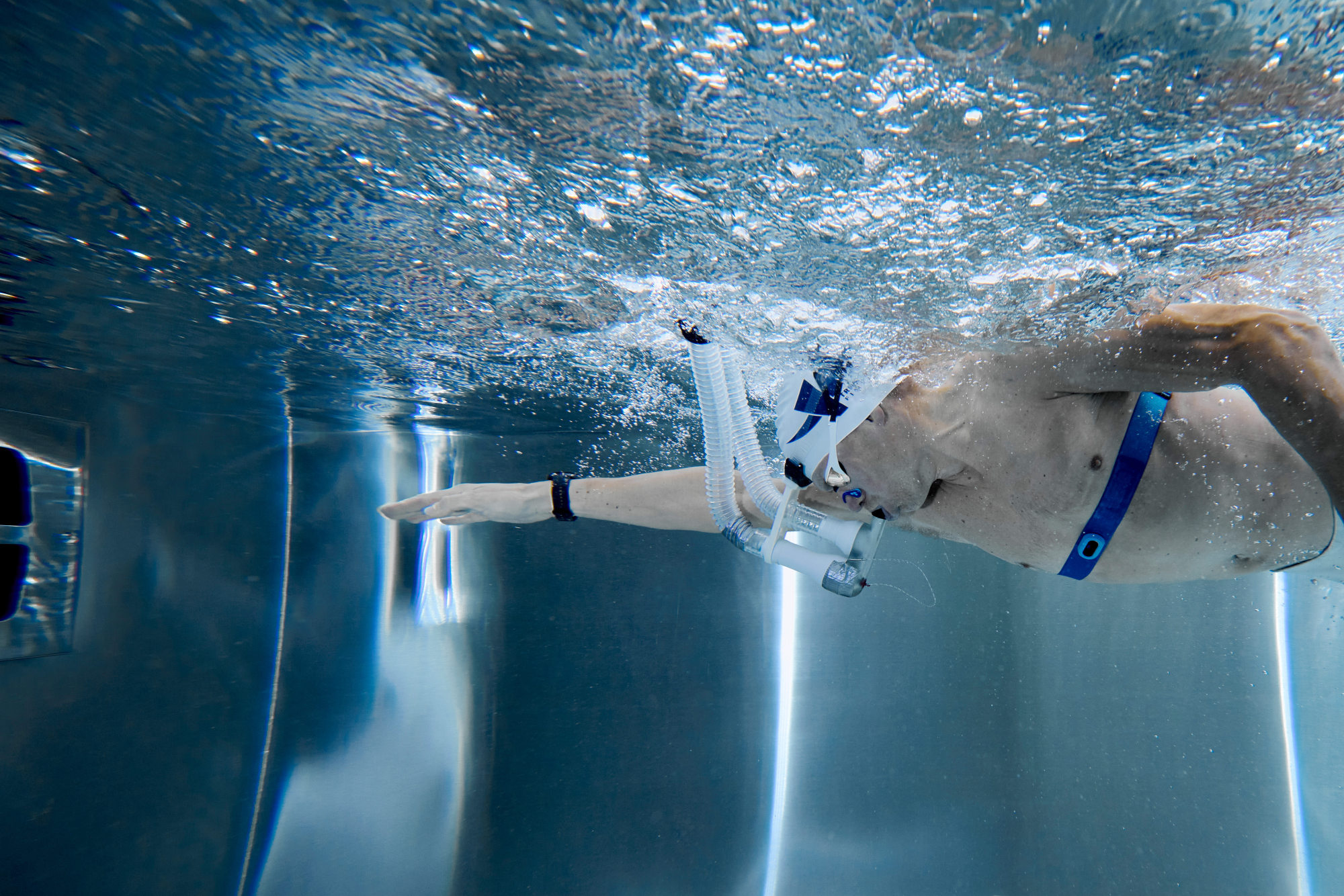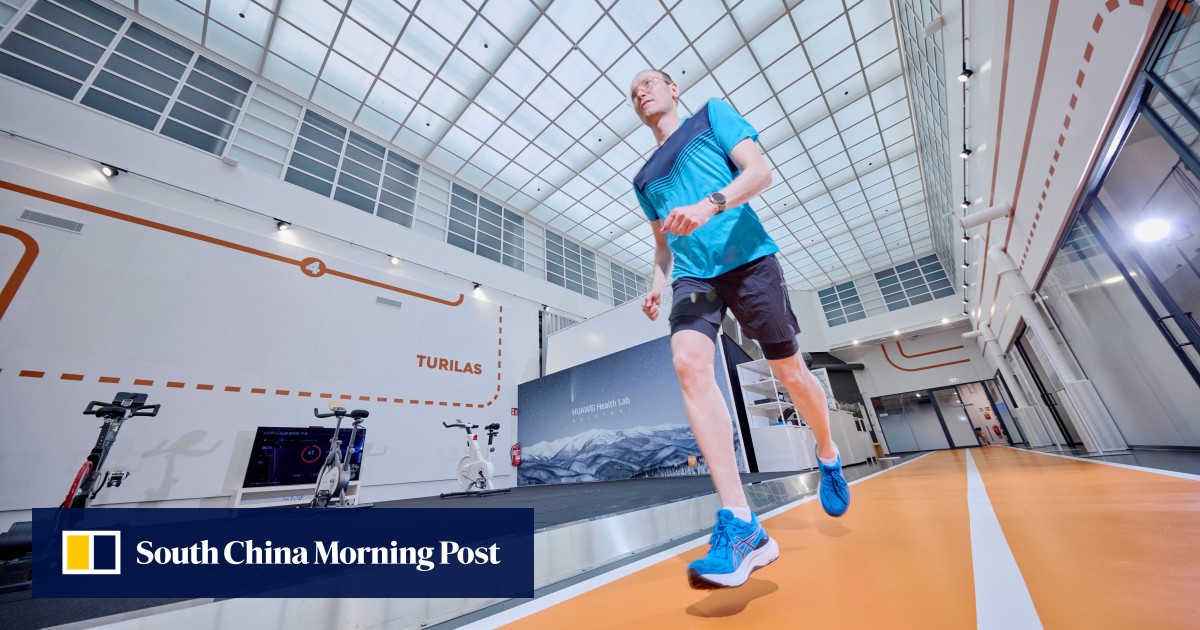In October this year, Huawei opened the Huawei Health Lab in Helsinki, Finland – the company’s third such facility.
With an area of almost 1,000 square metres (11,000 sq ft), the lab tests Huawei’s wearable sports and fitness algorithms in real-life situations, with athletes wearing the devices while using a range of state-of-the-art fitness equipment designed for more than 20 sports. The Finnish lab joins the ranks of two other Huawei Health Labs that are located in China: one in Xi’an, Shaanxi province; the other in Songshan Lake in Guangdong.
The new laboratory creates realistic sports simulations in five testing areas, tracking more than 200 physiological and biomechanical indicators. Participants are monitored with Huawei’s latest wearable devices, such as the Huawei Watch GT 4. The five testing areas comprise a counter-current pool, a ski simulator, a multifunctional treadmill, an instrumented treadmill and an open gym area used for various cardiovascular workouts.
“We are relentlessly committed to openness and collaboration, and working with partners to conduct in-depth research on eight key physiological systems, to help users better manage their health,” says Rico Zhang, president of smart wearable and health product line Huawei Consumer BG.
The company has spent a decade developing a world-leading wearable technology portfolio across hardware, software and services, and its health hardware devices include smartwatches (for adults and children), smart bands and smart weighing scales. The Huawei Health app has more than 450 million registered users, not only tracking real-time indicators, but also helping users develop healthy habits.

In addition to serving as a hub for health and fitness industry research and data collection, the Finnish Huawei Health Lab makes a nod to Europe’s love for mountain sports with its ski simulator. In a survey published by Statista, the most popular sports among Europeans are running (22 per cent), skiing (18 per cent) and cycling (15 per cent). Finland was a logical choice for Huawei, as four of the world’s top 10 universities specialising in sports science are located in Nordic countries. The Helsinki lab is staffed by a multidisciplinary scientific research team comprising six PhD holders and 20 experts from seven European countries in the fields of physiology, artificial intelligence (AI), machine learning, software testing and software engineering.
Four metrics are commonly measured by smartwatches: calories burned, heart rate, steps and sleep, collectively known as “Chess”. The survey credited smartwatches with providing health and fitness benefits – 88 per cent of users agreed that their device had helped improve their physical health; 86 per cent their mental health; and 76 per cent their overall quality of life.
The Finnish lab features a multifunctional treadmill that can test running, cycling and wheelchair racing, with speeds adjustable up to 50km/h (31mph).

For another popular sport – swimming, which can be enjoyed outdoors in both summer and winter – Huawei built its very own counter-current pool, ensuring the swimmers’ performance can be accurately assessed. The pool is equipped with dynamic water jets that can produce a controllable current flow rate up to 12,000 cubic feet per hour and also allows the adjustment of water temperature.
Huawei Watch GT 4 is at the core of the fitness monitoring. The laboratory uses it to conduct its day-to-day research to measure the wearer’s physiological data. The smartwatch’s trademarked TruSport scientific training model is able to quantify users’ running ability, record and analyse data, and to provide personalised training suggestions and plans.
The watch is also used to evaluate cardiopulmonary capacity (maximum O2 volume), while its new Stay Fit app and Activity rings give users an assessment of their overall movement and performance during workouts.

Smartwatches are likely to be mainstays for people wishing to improve their health and fitness. Market intelligence provider IDC forecasts 520 million wearables will be shipped in 2023, up 5.6 per cent from 2022. Hearables will be the top category with nearly 62 per cent of the wearables shipped this year, followed by smartwatches with about 32 per cent of shipments.
Huawei’s mission is to bring digital health to every person, home and organisation. Its vision is that intelligent, multidimensional health information should be accessible to all by means of devices that are fashionable and stylish, rather than solely functional.
The company’s study posits that better health habits will result in a reduced reliance on healthcare, addressing a significant societal and economic challenge in the region. “It can be hoped that greater proliferation of devices will result in both increased health knowledge and enhanced health behaviours,” the study concludes.

